Do you remember climbing trees when you were young?
I Remember sitting in a tree as a child.
An escape, a space away from everyone, a perch where my imagination could run wild
Grounded, connected, at peace. A sense of calm.
A space to be alone. With my thoughts, feelings and observations.
I still enjoy climbing trees. It is good for the soul, and great for my mental health.
Climbing trees VS Monkey bars
Spoiler alert: our best climbers – Monkeys – live and play in trees, not on ‘monkey bars’… there is good reason for that.
Worldwide statistics of playground injuries are far higher than injuries caused by children falling from trees….
Why?
‘Monkey bars’ are uniform in size, shape and distance apart. They are predictable. There is a rhythm that comes with ‘monkey bars’, therefore little thinking is needed, there is little need for concentration. There is no ‘connection’ to steel like there is with nature.
Trees have branches for swinging, just like monkey bars. But theres is so more meaningful learning that comes when climbing a tree. When children climb trees they have to concentrate and they connect authentically, with the tree.
Children develop their muscles, co-ordination, balance, resilience and thinking skills when they are challenged.
Tree cimbing is a sensory activity where children need to feel, balance and grip to the tree. For this reason, we should always encourage children to climb BAREFOOT.
Barefeet help us connect with the earth.
Children will develop connection and learn about the tree as they feel it, find its nooks and explore its natural ledges. They will find what to hold on to to pull themself up, they will learn about the strength of thin branches …. which we want them to learn at a lower height before being ‘put’ in the tree to fall. Children will hold onto and use this knowledge of the tree, and how they got up, on their way back down. Children will hold on to this new knowledge because of the meaningful connection they made in their learning and they will use it next time they get to explore this tree… just watch!
Tree climbing fosters physical learning, develops thinking, problem solving, perseverance, resilience and connection.
Perhaps more significantly, above the physical development and thinking that happens when children climb trees, they get a greater sense of achievement, a sense of pride! They did it ALL BY THEMSELVES. They worked it out, persevered and negotiated their way up the tree. Now they can explore the tree, or just sit, watch, listen and feel…. Before making their way back down, which can be just as challenging as climbing up.
Have you heard the old quote about learning “it’s not about the product, it’s the process”?
This is spot-on for tree climbing.
So what is the adults role here?
Understandably, adults get nervous. Statistics say we need not worry. Weigh up the risks VS the benefits. This will help you find peace with the climb.
1.Encourage your child to climb barefoot.
2.Allow and encourage your child to climb up and down BY THEMSELVES. Do not tell them how or do it for them.
3. Encourage your child to think and feel.
“The greatest help you can give children is the freedom to go about their work in their own way, for in this matter, your child knows better than you.”
-Maria Montessori
The climb UP
If your child cannot get up the tree by themselves it is not fair to lift them up. They will feel unstable, insecure and disconnected from the tree, therefore not know how to get down and thus feel unsafe thd whole time they are up there.
When you put/lift a child into a tree, you rob them of so much learning. They have not learnt how to get up therefore they cannot know how to get down.
If the tree is too big or the branches are too high, find another tree they can climb. If you are nervous/worried as the adult, start small, invite the child to ‘climb this tree’.
Please allow children the opportunity to navigate, problem solve and connect with the tree. Let them do their own risk assesment. They WILL work it out. Give your child the chance to do/learn this themselves. What they will learn in finding their own way up is far more valuable, and, they will hold onto this information far better than if you ‘tell’ them or do it for them.
“Be careful what you teach, ir might interfere with what they are learning.”
– Magda Gerber
My beliefs are the same with all things children learn and do… empowerment guides my practice. I believe children are capable. We need to trust them more, believe in their abilities and understanding and allow them the opportunity to drive their own learning journey.
I believe in ‘freedom of movement’ where we refrain from ‘placing’ a child ANYWHERE they cannot get themselves in and out of, or, to and from.
We often see adults at the playground, ‘lifting a child to the top of the slide’…. If they cannot climb either up the ladder or up the slide, then they shouldn’t be on the slide. (Yes, I believe climbing UP the slide IS ok. If you want to know my ‘why’, I can share)
Clearly the slide is too big and not developmentally appropriate for the stage the child/ren are at. Find a slide they can access themselves, make their learning successful and empower them to do things for themselves.
Say encouraging things like “look for spaces to put your feet” “can you see any branches to hold on to?” ” how does your body feel up there”
If you feel they are going too high, you could say ” look how high up from the ground you are? Do you feel safe up there? How does your body feel?”
WHILE they are up
Tree climbing is a great activity for children to learn about intuition. That feeling inside of us that tells us we do, or don’t feel safe. It is vital we allow children to learn about and feel these feelings when they are young so as teens they can recognize when they are not feeling safe and secure. Tree climbing is a great way to foster healthy risk taking, do own risk assesment and recognize intuitive feelings.
“If you want your children to grow into capable, independent adults,
Give then the space to make their own decisions,
Without controlling their every move.
Let them try.
Let then fail.
It’s not about always getting it right,
Its learning not to be afraid to try.”
– Brooke Hampton
If you are concerned about something, comment without sharing your ‘fear’ … Fear is contagious.
Try encourage presence, thinking and connection …
“How does the wind feel on your body?”
“That branch looks bendy, do you think it is strong enough to hold your weight?”
“Listen to your body”.
Try to avoid using the words ‘be careful’. This makes children immediatately recheck and worry something ‘bad’ is about to happen. It throws them off their balance, belief in themself and their connection with the climb.
Whatever you say, WILL influence their thinking, their sense of balance and their calm, so be mindful of this and think before you speak.
“Raise them with an inch of caution
A mile of freedom and
A bucket full of strength.
Children need our courage, not our fear.”
– Neil Regan
Getting DOWN
Same rules apply. Let them do it themselves.
Give them the gift of believing in and trusting them and their abilities, both physical and mental.
“You got yourself up there, you can get down”
If you need to support them down, keep you hands to yourself and use the same strategies for climbing up. You could add encouraging phrases like “you are nearly there”. “You are working really hard”.
“Feel for places to put your feet”
Once children get a taste for the feeling of being in a tree, the pride and the connection, they will want to do it again, challenge their own ability, solve the problem of how to get up and down.
Children will form connections with certain trees, wanting to revisit the same ones. This is where their connection will deepen and their learning will be authentic, meaningful and unlimited.
“We’ve become strangers to nature. The best way to live longer, healthier lives is to re-wild ourselves by returning to nature whenever we can.”
– Daniel Vitalis
So, your challenge is to go and hug a tree and encourage your child to climb it… (without your help of course).
I invite you to share your stories in the comments below OR share and tag me in your tree climbing photos on Instagram @strengtheningconnections
Much love and happy climbing,
Nickie
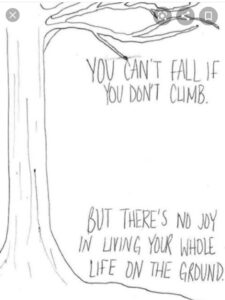
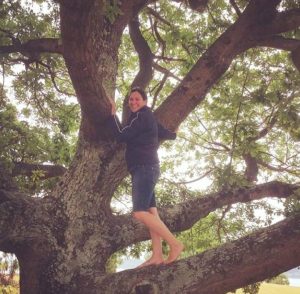
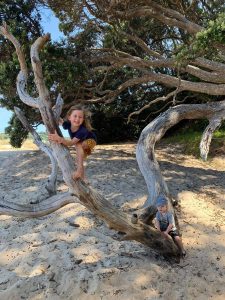




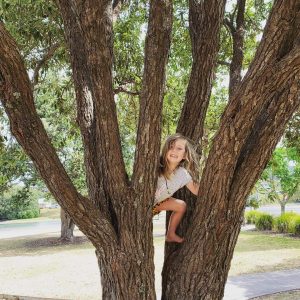
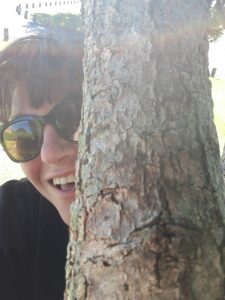
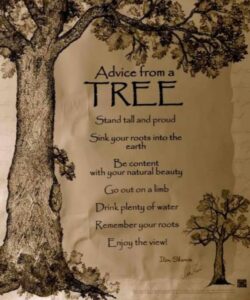

Thankyou, i enjoyed this post. When I was upset as a kid I would climb my favourite tree. It was my happy place, a calming down place, & now I realise ,a place to gain perspective. I think in order to understand the process that takes place for kids & tree climbing, lets as adults re connect and climb a tree too!…i haven’t climbed a tree in ages…now I’m going to do it. Our 5 year old son and I will go on a tree climbing expedition and I will let you know how it goes. There are some awesome trees in reserves around our town. Thankyou for your inspiration😊
Kia ora Jodi,
Yes, you and me both. We had a Loquot tree that was my escape, a calming space. Where I felt present in the climb and connected to the tree.
If you get a chance to grab some photos, please share. But if it takes away from the moment and connection, a story shared is just as valuable. Happy climbing!
Nga mihi nui
Climbing a tree as an adult is exhilarating!! Especially if you do it barefoot xo
Dr. Charles messaged me on Instagram with this feedback…
That was a very interesting and informative blog post. Especially explaining the difference and importance of climbing trees, rather than playground bars, and how it is best and most helpful to climb with bare feet! 🌳👣🌲👍Thank you.🙂
Nga mihi, thank you Dr. Charles 🙏